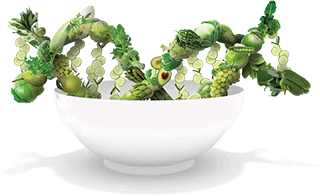Welcome to week three of this four part series on nutrition and immunity. This week we’re diving into Vitamin D.
Vitamin D is a fat-soluble vitamin found in some foods and supplements. It’s needed to maintain strong bones, plays a role in lifting mood and the immune system needs it to fight off bacteria and viruses. It works alongside calcium to help protect against osteoporosis.
There are two forms of Vitamin D: D2 and D3. D2 comes from plant sources and fortified foods and D3 is only found in animal food sources. Current studies show that there is little difference between vitamin D2 and D3 for raising blood levels. However, D3 is superior for sustaining those levels.
Vitamin D supplements come in international units (IUs). Our bodies take more steps to convert D2, the plant form, to its active counterpart than they do to convert D3 to its active counterpart. So, even though the units are the same the doses will differ. You shouldn’t exchange one for the other if you’re supplementing.
Our bodies can make vitamin D active in sunshine. It’s the reason it’s called the ‘sunshine vitamin’. As little as six minutes a day can activate the process.
Some studies are emerging linking the severity of COVID-19 cases with Vitamin D deficiencies. The better your vitamin D levels fall within normal or high normal ranges the lesser the severity of infection. It is important to note what the levels were in COVID-19 patients before they had the infection. Additional studies are suggesting to temporarily discontinue Vitamin D should you fall ill.
Where can we get vitamin D? Very few foods naturally have vitamin D. The best food sources are fatty fish such as salmon. Beef, liver, cheese and egg yolks provide small amounts. A good plant source of vitamin D is mushrooms.
Most of the Vitamin D in our food supply is from fortified foods. Some examples include cow’s milk, plant based milks, breads, cereals, some orange juice and yogurt brands. It’s best to check labels.
Are supplements dangerous? Yes, they can be. Because vitamin D is fat soluble, it can accumulate and can be toxic in large amounts. For this reason, it’s important to have your levels checked regularly if you are on long term vitamin D therapy.
So, the best way to get Vitamin D is to include some daily food sources, spend a few minutes outdoors in the sun and have your blood levels checked if you are on long term supplementation. Remember to temporarily discontinue supplementation if you should start to feel ill.
In good health,

